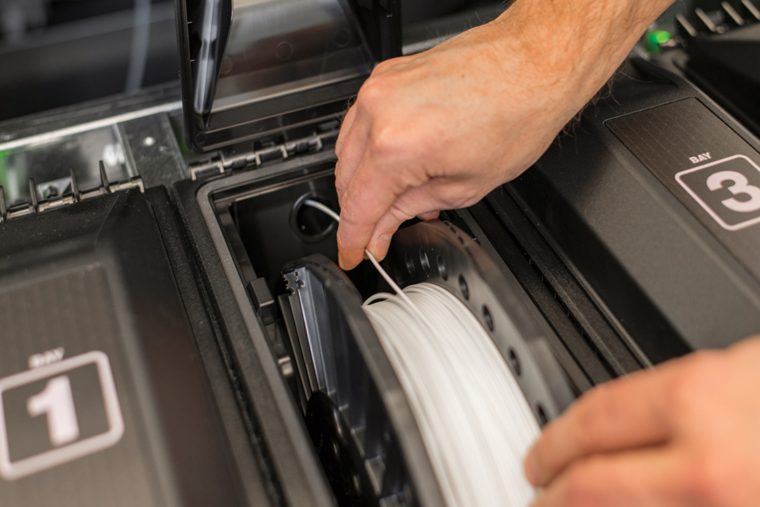 FDM joins the trend towards an open materials ecosystem
FDM joins the trend towards an open materials ecosystem
Customers gain flexibility to explore broader sets of materials capable of accelerating adoption of additive manufacturing
Stratasys Ltd. (NASDAQ: SSYS), a leader in polymer 3D printing solutions, announced today that it is advancing its manufacturing strategy with a new level of third-party open materials for printers. 3D FDM ® through an annual open materials license. The company already offers open materials availability on Neo stereolithography 3D printers as well as Stratasys Origin ® printersOne and Stratasys H350 ™ recently announced. By extending this approach from the materials ecosystem to FDM technology, Stratasys will enable manufacturing customers to address new applications with demanding requirements while having dual sources of materials.
Stratasys has rapidly expanded its materials ecosystem this year through P3 ™, SAF ™ and stereolithography 3D printing systems to provide customers with different material offerings. For example, in September, the company introduced an open materials license for Origin One, based on P3, along with two new Loctite materials from Henkel. Stratasys is incorporating rapid material innovation into the industry’s most popular and reliable FDM systems.
“Innovative materials are the fuel that drives additive manufacturing,” explains Hugo da Silva, vice president of additive manufacturing at Covestro, a leading supplier of quality polymers. “That means we need more variety of materials to address as many manufacturing applications as possible. At the same time, we want to ensure that customers have the utmost confidence in the performance of those materials. The new Stratasys program is an important milestone for our industry and we look forward to becoming a major supplier of FDM filaments. ”
According to Senior Vice President of Manufacturing Dick Anderson, this new materials ecosystem reflects the increasingly important role that additive manufacturing plays for Stratasys customers. “Our customers urgently need to apply the benefits of additive manufacturing at scale in their organizations to address the requirements of sustainability, cost competitiveness, agility and customization,” he says. “Our three-tier materials ecosystem will help bring materials innovation to our customers faster so that we can continue to ensure that the most reliable additive manufacturing platform is an increasingly indispensable part of the global manufacturing economy.”
The Stratasys materials ecosystem includes:
Stratasys Preferred Materials – Stratasys preferred materials for its customers, for the highest performance applications. These materials are designed to provide the best combination of media and printer performance, and are developed by Stratasys or third-party media partners.
Stratasys Validated Materials – Stratasys validated materials with basic reliability testing to accelerate the expansion of commercially available material options.
Open Materials – Non-validated materials accessed through an Open Materials License (OML). These materials may offer unique attributes and the ability to address new applications, but have not undergone validation testing or optimized performance and functionality for Stratasys printers.
Stratasys validated materials are expected to be available to FDM 3D printer customers during the second half of 2022, beginning with the Fortus 450mc.
Stratasys now provides a progressively managed open materials ecosystem for the industry’s most comprehensive polymer additive technologies and offers the broadest range of optimized and validated materials. Through GrabCAD Print software, customers will have access to system printing parameters to adjust media performance as needed and optimize part performance.
All Stratasys preferred and validated materials for Stratasys systems can be purchased through Stratasys channels and from reseller partners.